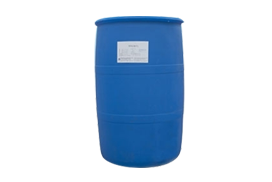In recent years, with the continuous renewal of textile fiber varieties, new synthetic fiber materials such as composite fiber, special-shaped fiber and superfine fiber appear, which puts forward new requirements for printing and dyeing processing. The dyeing and finishing auxiliaries used after textile printing and dyeing usually require good wetting effect on the fabric, strong solubilization and dispersion ability of dyes, and certain affinity for dyes or fibers, which can slow down the dyeing rate of fibers to achieve the purpose of level dyeing. In addition, according to special needs, it can have a certain softness or water repellent effect on the fabric. Therefore, the wetting, synergistic, dispersing, leveling, softening and water repellent effects of surfactants are of great significance to the textile printing and dyeing industry.

When the surfactant solution contains homologues or adds another surfactant or organic or inorganic electrolyte, the physicochemical or surface properties of the solution will change significantly and its application performance will be changed.
Generally, hydrophilic lipophilic balance value (HLB) is used to represent the mutual balance degree of hydrophilic and hydrophobic groups in surfactants; For non-ionic surfactants, cloud point is also used to express the hydrophilicity. The greater the HLB value, the higher the cloud point, the better the hydrophilicity of surfactants. In addition, the critical micelle concentration (CMC) is often taken as the minimum concentration of surfactant to form micelles, and the reciprocal of CMC (1 / CMC) is used to represent the efficiency of reducing surface tension. The lower the CMC, the higher the efficiency. In addition, the surface tension of surfactant in CMC was also( γ CMC) is used as a surfactant to reduce the surface tension of water. It can be seen that HLB, cloud point, CMC and γ CMC can be used as a measure to characterize the surface properties of surfactants.
In the textile industry, many dyeing and finishing auxiliaries often use the complex of surfactants. However, the combination of surfactants produces synergistic effects and synergistic effects, and there are functions that a single surfactant does not have. Therefore, the compounding technology and synergistic effect of surfactants, as well as the relationship between the surface characteristics and application properties after compounding, have become an important research direction in the field of printing and dyeing auxiliaries, and also an extremely important research content to improve the quality of printing and dyeing. At present, there is a big gap between the quality of printing and dyeing auxiliaries in China and foreign commodities. In addition to monotonous varieties, imperfect performance and insufficient development capacity, there is little research on the principle of surfactant compounding and its relationship with application performance, which needs to be strengthened to provide more theoretical guidance for product development and application.